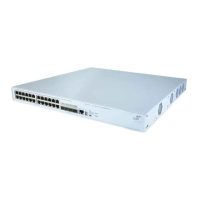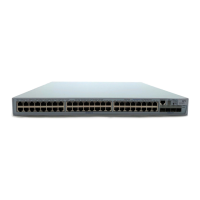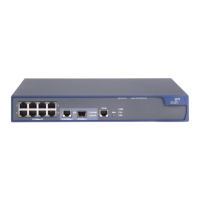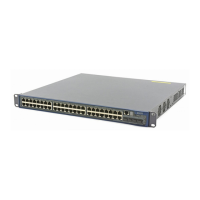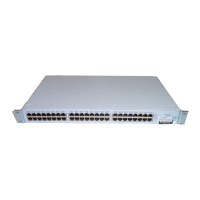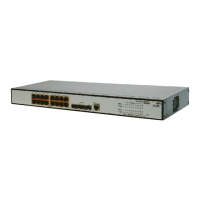AAA and RADIUS Protocol Configuration 207
Configuring Self-Service
Server URL
The self-service-url enable command can be used to configure self-service server
uniform resource locator (URL). This command must be incorporated with a
RADIUS server (such as a CAMS) that supports self-service. Self-service means that
users can manage their accounts and card numbers by themselves. And a server
with the self-service software is called a self-service server.
Once this function is enabled on the switch, users can locate the self-service server
and perform self-management through the following operations:
■ Select Change user password on the 802.1X client.
■ After the client opens the default explorer (IE or Netscape), locate the specified
URL page used to change the user password on the self-service server.
■ Change user password on this page.
Perform the following configuration in ISP domain view.
By default, the self-service server URL is not configured on the switch.
Note that, if "?" is contained in the URL, you must replace it with "|" when
inputting the URL in the command line.
The "Change user password" option is available only when the user passes the
authentication; otherwise, this option is in grey and unavailable.
Creating a Local User A local user is a group of users set on NAS. The user name is the unique identifier
of a user. A user requesting network service may use local authentication only if its
corresponding local user has been added onto NAS.
Perform the following configurations in System View
Tab le 216 Creating/Deleting a Local User and Relevant Properties
By default, there is no local user in the system.
Setting Attributes of the
Local User
The attributes of a local user include its password display mode, state, service type
and some other settings.
Tab le 215 Configuring the self-service server URL
Operation Command
Configure self-service server URL and configure the
URL address used to change the user password on the
self-service server
self-service-url enable
url-string
Remove the configuration of self-service server URL self-service-url disable
Operation Command
Add local users local-user user_name
Delete all the local users undo local-user all
Delete a local user by specifying
its type
undo local-user { user_name | all [
service-type { lan_access | ftp | telnet
| ssh | terminal } ] }

